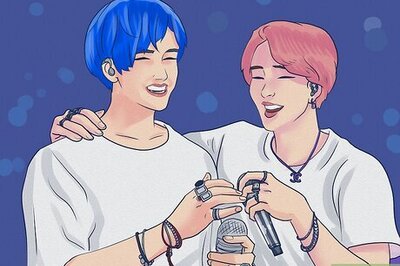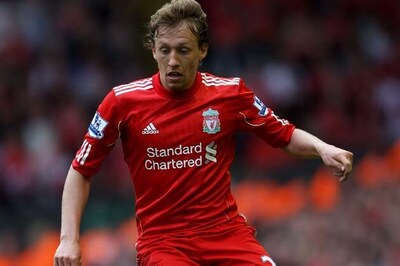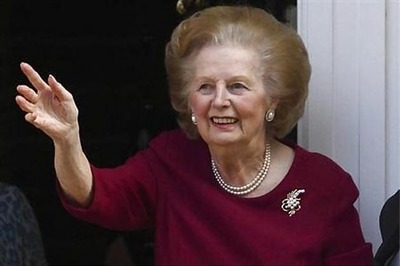
views
Themes in “Lord of the Flies”
Civilization vs. Savagery With no adults to guide them, the boys are forced to fight for their survival and question their own humanity. Quickly after their plane crash-lands on the island, the boys are faced with the realization that civilization as they knew it no longer exists. The rules and regulations impressed upon them by society don’t apply any longer. They’re alone and unsupervised, in an untamed wilderness, with few tools or skills to help them survive. Over the course of the narrative, the characters clearly struggle between giving in to their base instincts and trying to maintain some semblance of normality in their new topsy-turvy world. In the earlier chapters, Ralph makes attempts to create a democratic system with voting, delegation, and purpose, and he emerges as a natural leader in doing so. This full analysis of Chapter 1 reveals early themes, symbols, and additional context. Jack initially agrees to try and maintain order. However, he’s jealous that Ralph is the favorite, which immediately ignites the flame of savagery and discord within. Supporting Quote: “He began to dance and his laughter became a bloodthirsty snarling." —Describing Jack, Chapter 2 Ralph and Jack ultimately symbolize the battle between civilization and savagery, as Ralph strives to maintain a sense of morality and decorum while Jack sinks deeper and deeper into brutality and madness. Supporting Quote: “We’ve got to have special people for looking after the fire. Any day there may be a ship out there… and if we have a signal goin, they’ll come and take us off. And another thing. We ought to have more rules. Where the conch is, that’s a meeting. The same up here as down there.”—Ralph, Chapter 2
Loss of Innocence The boys grow up very fast throughout the novel. Although Ralph and Piggy are both the voices of wisdom at the beginning of the book, they too end up committing heinous acts by the end. Ralph, Piggy, and Samneric all participate in Simon’s ritualistic killing and are unable to even speak about it afterward out of shame and disgust at what they have done. Jack leads the pack when it comes to violence, brutally killing the boy with the mulberry birthmark, Simon, and Piggy. Additionally, the sexually-charged killing of the sow shows how far from innocence the boys have come. Instead of hunting responsibly, the boys kill the sow in a cruel way. They delight in the brutal murder, with Roger shoving his spear up the pig’s anus. When the Naval officer shows up to rescue them, Ralph struggles to explain why three boys are dead and how things got so out of hand, despite his best efforts. Supporting Quote: "Ralph wept for the end of innocence, the darkness of man's heart, and the fall through the air of a true, wise friend called Piggy."— Chapter 12
Good vs. Evil The boys struggle with defining the nature of their humanity. From the very beginning, the boys make fun of Piggy and exhibit a growing disregard for the order Ralph is trying to establish. They regress into primitive behaviors, taking off their clothes and painting their bodies. They even come up with a ritualistic chant when slaughtering the pig. “Kill the beast! Cut his throat! Spill his blood,” they cheer on gleefully (page 86). Without adults to keep them in line, they cease to be kind or to take care of each other. Instead, they play at killing one another, and in a few instances, succeed. Golding states that Jack’s camouflage mask for pig hunting “was a thing on its own, behind which Jack hid, liberated from shame and self-consciousness.” Simon has an imaginary exchange with the sow’s head, named “Lord of the Flies” by the boys. It grins at Simon and reveals that the “beast” is part of him and Simon will never be able to escape it, signifying that the real beast is humankind’s evil nature. Things continue to spiral out of control as the children’s devious nature takes over, resulting in senseless slayings and a fire that threatens to kill everyone on the island. Supporting Quote: “There was a space around Henry, perhaps six yards in diameter, into which he dared not throw. Here, invisible yet strong, was the taboo of the old life. Around the squatting child was the protection of parents and school and policemen, and the law. Roger’s arm was conditioned by a civilization that knew nothing of him and was in ruins.”—Chapter 4
The Weak and the Strong Living away from civilization causes a power rift among the boys. Masculinity is one of the secondary themes explored in the novel, especially in terms of understanding how masculinity relates to order, dominance, and strength. The older boys—Ralph, Jack, and Roger—are stronger not only physically, but also of character. Ralph is voted as the overall leader, but allows Ralph to lead the rest of the choir boys, creating a specific power structure and dynamic among them. Ralph establishes rules in an attempt to maintain order. However, despite agreeing to his leadership in name, the boys let the fire go out to go hunting with Jack, missing an opportunity to be rescued when a ship passes. When Ralph is the only civilized character left, the rest of the boys light the island on fire to flush him out of his hiding place, kill, and behead him like a pig. In essence, the weaker boys in the novel have two choices: follow the strong, even if their leadership is savage and irrational, or die. Supporting Quote: “The fire’s the most important thing. Without the fire, we can’t be rescued. I’d like to put on war paint and be a savage. But we must keep the fire burning. The fire’s the most important thing on the island, because, because…”— Ralph, Chapter 5
Individualism vs. Community The boys enjoy being unsupervised until things get out of hand. The boys experience immediate delight at being without adults until they realize they have to take care of themselves. Though they are dependent on adults to save them, they want to enjoy their independence in the meantime, as evidenced by the passage, “We want to have fun. And we want to be rescued” (page 45). The boys are divided into two groups— followers of Ralph and followers of Jack— but they seldom follow Ralph’s orders because they’re considered boring, especially in comparison to stripping naked, painting their faces, and behaving however they like without consequence. Arguably, the best thing for all of the surviving boys is to keep tending to the fire to make sure they’re rescued. However, none of the boys wants to listen to reason when they no longer have to, even if it’s for the good of the group. Instead, they choose to amuse themselves by acting on their animalistic impulses. Another theme here highlights the dangers of mob mentality. Ralph and Piggy initially attempt to organize the boys and accomplish tasks, but despite their best efforts, these tasks are never completed because of the other boys’ disinterest and tendency to scatter towards whatever adventures suit them. Similarly, the boys murder Simon and Piggy in a ritualistic trance that they all fall prey to, exposing the fragility of goodness in the face of all-consuming evil. Supporting Quote: “Which is better, law and rescue, or hunting and breaking things up?”— Ralph, Chapter 11
War and the Future of Mankind The island is a microcosm of the war that wages on in the outside world. Golding wrote Lord of the Flies in the aftermath of World War II. Golding was in the Royal Navy and saw how the war ravaged England, Europe, and the world as a whole firsthand. In the 1950s, the Cold War began brewing, along with the threat of nuclear destruction, which inspired Golding to investigate and ultimately critique the sadistic nature of man. Within the subtext of Lord of the Flies, Golding asks: What happens when we are allowed to shed the mask of civility? Who are we when no one is watching? Will we be responsible for our own destruction? Supporting Quote: “I'm frightened. Of us. I want to go home."— Ralph, Chapter 10
Symbols & Motifs in “Lord of the Flies”
Piggy’s Glasses Often referred to as “the specs,” Piggy’s glasses are an extension of him, representing intelligence, rationality, and democracy. Piggy constantly cleans and fiddles with the glasses throughout the book, conveying their value. The specs are also used to start fires, providing them with a rescue signal as well as the means with which to cook their kills. When the glasses are stolen, leaving Ralph, Piggy, Samneric, and the littluns unable to start a fire, it signals the group’s deteriorating sanity and logic. Supporting Quote: “Piggy took off his damaged glasses and cleaned the remaining lens.”—Chapter 6
The Conch Shell The conch shell represents order and power. Early on, the boys decide to use the conch shell to call meetings and determine who can speak. The person holding the shell is given the right to speak and to demand the attention of the others. However, the conch shell loses its power as the boys become more disorderly and give in to their primal instincts. By the end of the novel, the boys don’t respect the conch or the person holding it. When it breaks, it symbolizes the boys’ descent into chaos on the island. Supporting Quote: “We don’t need the conch anymore. We know who ought to say things.”—Jack, Chapter 6
The Beast The boys think that their fear comes from an external force, which they refer to as “the beast,” but the beast is really an internal fear brewing of mankind’s inherent evil and violence. When Samneric finds the dead parachutist, the beast transforms into a tangible thing. The sow’s head, or the titular Lord of the Flies, is another example of a beast in the book. Simon realizes that both the dead parachutist and the sow’s head are not actual beasts but a representation of the boys’ savagery. However, he is killed as he tries to explain this to the rest of the boys. Supporting Quote: “Maybe there is a beast… Maybe it’s only us.”—Simon, Chapter 5
Fire The fire represents the boys’ connection to society and their desire to be rescued. Though Piggy and Ralph think it’s essential to keep the signal fire lit at all times to attract the attention of passing ships, most of the other boys lose interest in the task as they embrace their unsupervised way of life on the island. Ironically, when Jack lights the island on fire to get Ralph to come out of his hiding spot, the smoke gets the attention of a passing warship and leads to the boys’ rescue. Supporting Quote: “Suddenly he blundered into the open, found himself again in that open space—and there was the fathom-wide grin of the skull, no longer ridiculing a deep blue patch of sky but jeering up into a blanket of smoke. Then Ralph was running beneath trees, with the grumble of the forest explained. They had smoked him out and set the island on fire.”—Chapter 12
The plane crash When the plane crashes on the island, it leaves a “scar” on the ground, symbolic of the havoc that humans wreak on nature. The once pristine and untouched island is marred by the plane, and later by the boys as they set it on fire. They do this not once, but twice, fortifying the idea that mankind is responsible for the pollution and corruption of the natural world. Supporting Quote: “All ‘round him, the long scar smashed into the jungle was a bath of heat. He was clambering heavily among the creepers and broken trunks when a bird, a vision of red and yellow, flashed upwards with a witch-like cry; and this cry was echoed by another.”—Chapter 1
Literary Devices in “Lord of the Flies”
Foreshadowing In literature, foreshadowing is when the author reveals subtle hints early in the novel about what will happen later. Golding utilizes this literary device multiple times throughout the narrative, offering clues as to nearly every major event. For example, Piggy doesn’t believe in the beast and tells Ralph they have nothing to fear, but adds, “unless we get frightened of people.” This foreshadows the coming events and the boys’ descent into chaos and savagery. The fire at the closing of the book that almost kills everyone on the island is also foreshadowed often throughout the novel, with Golding continuously highlighting both the useful qualities of the fire, along with the potentially disruptive ones. Supporting Quote: “The separate noises of the fire merged into a drumroll that seemed to shake the mountain.”—Chapter 2
Imagery Imagery is defined by the use of figurative, descriptive language to paint a picture in the reader’s mind. Describing the site of the crash as a “scar” is one form of imagery, fortifying the connection between the boys arriving on the island and the physical and emotional damage that was to come. Often, the diction used when describing a person, place, or thing serves to evoke certain feelings. Supporting Quote: “The water rose further and dressed Simon's coarse hair with brightness. The line of his cheek silvered and the turn of his shoulder became sculptured marble…”—Chapter 9
Metaphor & Simile Metaphors are comparisons between two things without using “like” or “as”; similes are comparisons that do use “like” and/or “as.” Golding uses this literary device in every chapter, often merging natural image systems with man-made ones, yet again juxtaposing savagery and civility. In Chapter 2, Golding describes the sun as a “drop of burning gold that slid nearer and nearer the sill of the world,” evoking its bright yellow color and power. Since there is no “like” or “as,” the comparison is a metaphor. Supporting Quote (Simile): “The flames, as though they were a kind of wild life, crept as a jaguar creeps on its belly toward a line of birch-like saplings that fledged an outcrop of the pink rock.”—Chapter 2
Personification Golding assigns human qualities to inanimate objects, like the island and its mysterious creatures. He describes the island as having “wounds” and a “voice,” creating a vivid and disorienting landscape that ultimately nudges the boys toward madness. Natural elements, like the sun and the forest, are described as having “enmity” and a life of their own. All of this personification serves to embody the fear and despair felt by the boys while they awaited rescue, rendering it a very valuable literary device. Supporting Quote: “Piggy and Ralph, under the threat of the sky, found themselves eager to take a place in this demented but partly secure society. They were glad to touch the brown backs of the fence that hemmed in the terror and made it governable.”—Chapter 9



















Comments
0 comment